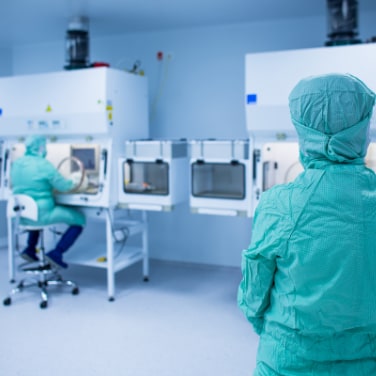How a Safety Specialist Can Help Improve Safety in Your Lab
By Christina P. Hooton.
Underlying hazards exist in every facility, and the lab is no different. The key to maintaining a safe work environment for your employees, faculty, and students is identifying hazards and putting in place the personal protective equipment (PPE), training, and resources required to mitigate those risks.
Whether you’re just starting your safety program or need to reinvigorate your existing safety processes, a safety specialist can serve as your trusted resource and offer the support you need to prioritize safety in your lab.
Identifying Hazards
When designing a safety program, the lab manager, or the environmental, health, and safety (EH&S) professional supporting the facility, will perform a hazard assessment. During the assessment, they will identify all the hazards within a lab, prioritize each, and define the proper engineering controls, work practices, PPE, or other safety supplies to use in those situations.
“Safety specialists with a distributor or a PPE manufacturer can help support a hazard assessment, providing core information and then personalizing it to their particular organization and protocol,” said Don Doyle, Fisher Scientific senior safety specialist, Thermo Fisher Scientific.
For example, hazardous waste may be present in the lab. In this situation, Charlie Fink, Fisher Scientific senior safety specialist, Thermo Fisher Scientific, recommends a site assessment. “It involves a walkthrough of your lab by a safety specialist who compiles a confidential report indicating where you may or may not be complying with applicable standards. I provide assessments to my customers who want to make sure they are properly storing hazardous materials and wastes and have the right products and supplies on hand to safely transport and dispose of wastes,” said Fink.
Selecting PPE
After PPE requirements are identified through the hazard assessment, a safety specialist can make product suggestions for your lab based on your specific needs. For example, hand protection is needed in every lab, but selecting the right option depends on the work being done, regulatory requirements, and your business performance goals.
“Most customers are dealing with sharps, which could be blades, broken glass, etc., so they need a good solution for cut protection. In these situations, I usually recommend an 18-gauge cut liner that can be worn underneath their exam gloves,” said Doyle. “Cryo gloves are another common solution. Although they are generally large, puffy gloves, there are options that offer high dexterity, are suitable for –80°C cryo work, and are great for handling frozen cryo tubes.”
"Safety specialists with a distributor or a PPE manufacturer can help support a hazard assessment, providing core information and then personalizing it to their particular organization and protocol."
Optimizing Education and Training
Your lab personnel need to be aware of and comply with the standards and regulations of various government agencies, including the Occupational Safety and Health Administration (OSHA), the U.S. Department of Transportation (DOT), the U.S. Environmental Protection Agency (EPA), and the U.S. Food and Drug Administration (FDA), depending on their work. It’s also important for them to be aware of your organization’s internal standard operating procedures (SOP) and the requirements of state and local governments.
The initial assessment will help to reveal which standards and regulations lab personnel need to adhere to and identify training and education opportunities. Safety specialists can make additional suggestions and connect labs with safety training and services as well as training in specific areas, such as contamination control.
Focusing on Sustainability
In addition to maintaining safety standards, many labs need to meet sustainability goals that are intertwined with safety practices and products. Recycling and disposal can be challenging because of the many different waste streams—from hazardous and regulated medical waste to more traditional streams such as glass and plastic.
“From a lab and safety perspective, implementing sustainability measures could mean following green chemistry practices; recycling gloves, apparel, masks, and pipette tips; using biodegradable gloves and other products; and just properly disposing of and reducing waste of everyday safety supplies,” said Josh Boyle, Fisher Scientific senior safety specialist, Thermo Fisher Scientific.
Relying on a safety specialist can make this process less daunting. They can provide greener product recommendations as well as suggest recycling programs that simplify the complexities.
No matter the hazard or area of focus, safety specialists can provide the extra support you need to improve safety in your lab every step of the way.
Christina P. Hooton is a Thermo Fisher Scientific staff writer.
